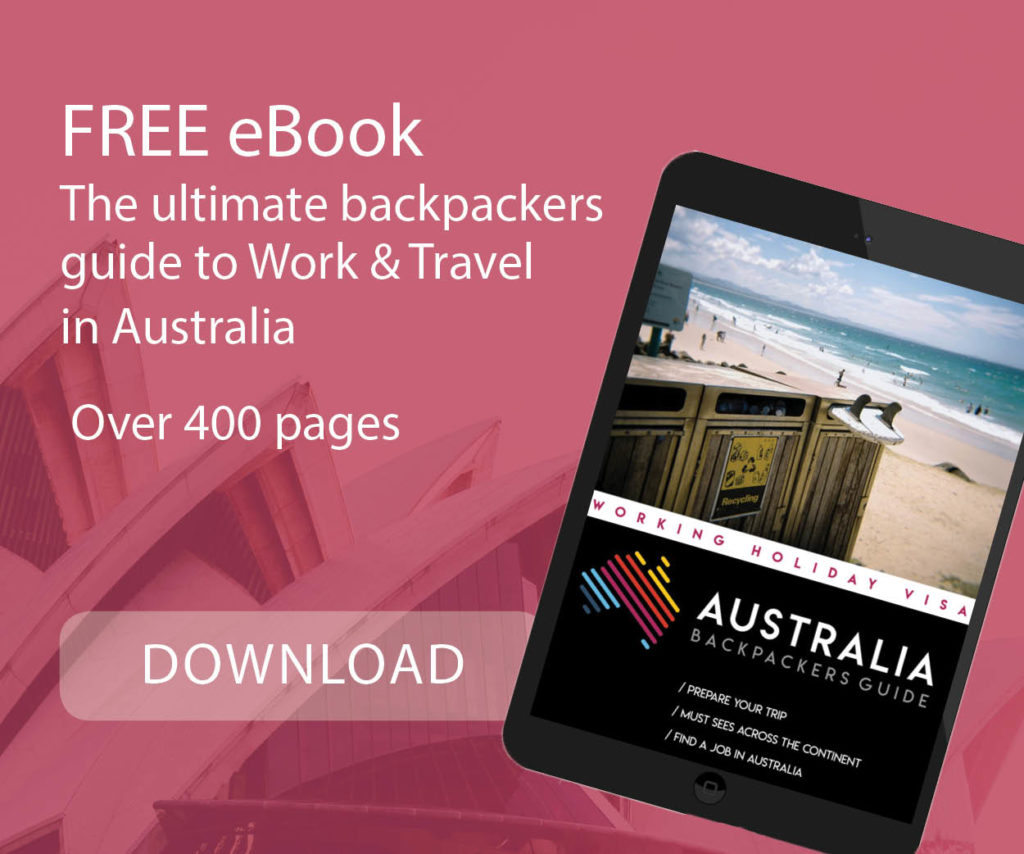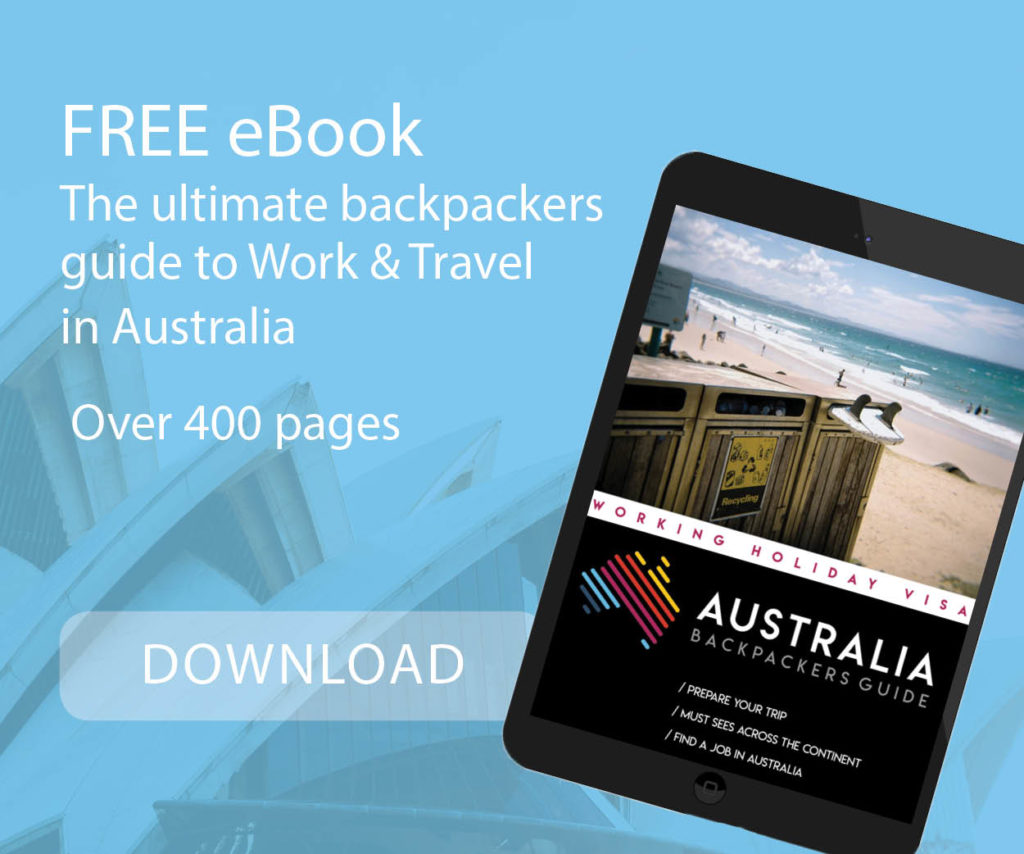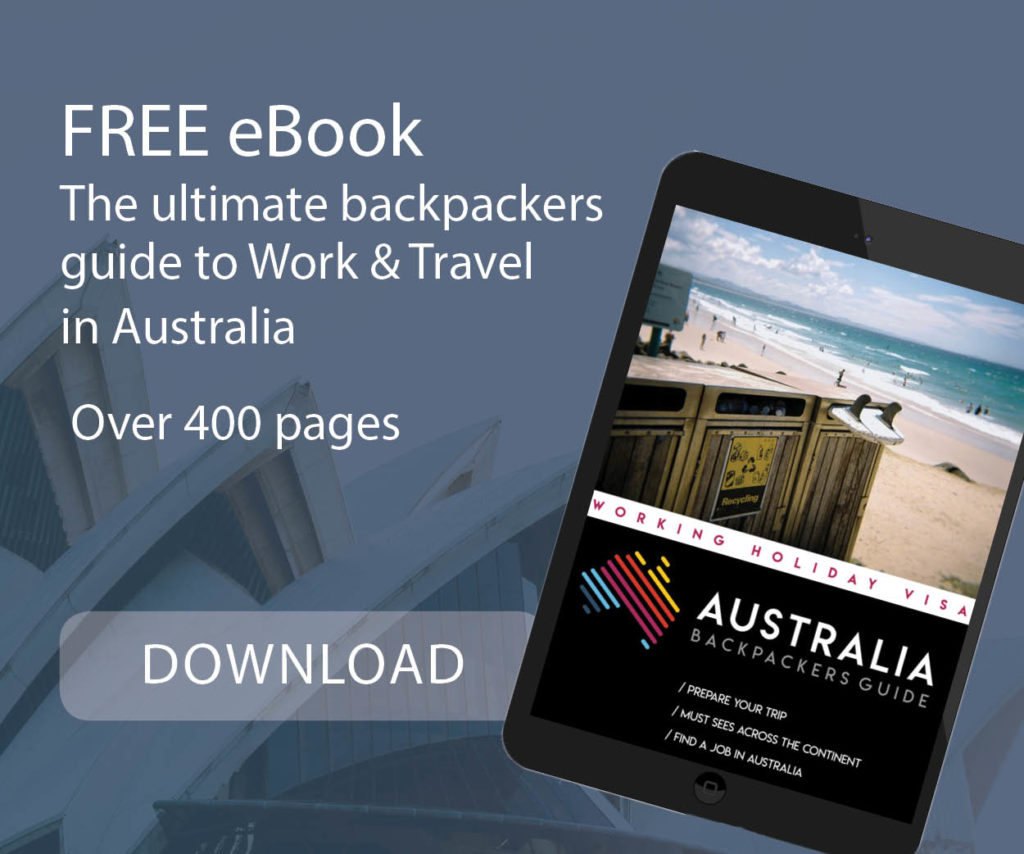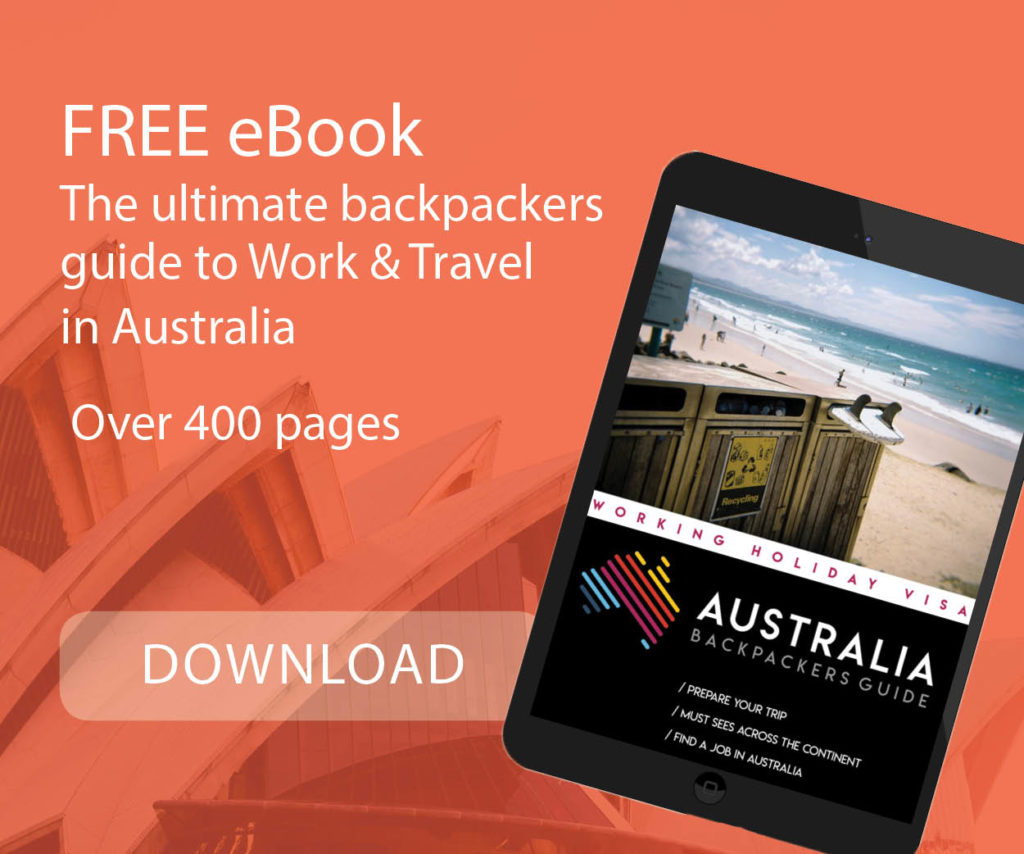An internship in Australia—whether as part of your degree or to kick‑start your career—can be an invaluable experience. Below, find how to secure and undertake an internship legally, understand your rights, and budget for your stay.
Table of Contents
Visa Options for Interns
Working Holiday Visa (subclass 417/462)
Getting the Working Holiday visa is pretty straightforward without any tedious paperwork. Valid for 12 months and extendable for 2 more years (under conditions), it allows you to work and travel in Australia. This visa is aimed to people between 18 to 30 or 35 years old (depending on your nationality).
This visa allows short‑term internships (≤ 6 months with one employer) without sponsorship. As the visa application process is easier and saves companies from having to sponsor their interns, the Working Holiday visa is more popular.
Read also : Working Holiday Visa in Australia
Training Visa (subclass 407)
For structured, workplace‑based training up to 2 years. This visa requires an approved sponsor and nomination:
- Visa application (primary): AUD 415
- Sponsorship fee: AUD 420
- Nomination fee: AUD 330
Visit the official government page to find more information on how to apply for this visa.
Student Visa (subclass 500 & post‑study 485)
– Sub 500: work ≤ 48 hrs/fortnight during study; unlimited in breaks.
– Sub 485: post‑study work rights 2–4 years, ideal for graduates seeking internships.
Why choose Australia for your Internship?
Australia’s robust economy and innovation-driven industries make it an ideal destination for internships. From thriving start-ups in Sydney to mining giants in Perth, the country offers a range of opportunities across various sectors including technology, finance, healthcare, and environmental science. Moreover, the Australian work culture is renowned for its emphasis on work-life balance, providing a conducive environment for learning and personal growth.
Preparation for the internship
Cultural Insight: Gain an understanding of the Australian work culture, which emphasizes work-life balance, open communication, and equality.
Housing and Budgeting: Organize your accommodation and budget for your expenses throughout your stay.
Advantages of an internship in Australia
Skill Enhancement: An Australian internship offers a great opportunity to improve both your professional and language skills.
International Networking: Broaden your international professional connections, paving the way for future career opportunities.
How to Find & Land an Internship in Australia?
Companies are increasingly tending to hire interns because this has many advantages for them, particularly in terms of salary. Before starting your research, it is important to have an “Australian-style” resume and a well-written cover letter. The majority of internships are located in major cities such as Sydney, Melbourne, Brisbane, Perth…
Prepare your applications well
Resume and Cover letter
Craft an Australian‑style resume and cover letter, proof‑read by a native English speaker. For more information, check out our article: how to create an Australian resume.
Make sure you personalize your cover letter for each company. It is better to send out a few job applications of high-quality instead of applying for a number of jobs without showing interest in the company. Finally, keep in mind that Australian companies generally place a higher value on professional experiences than on degrees. So if you have experiences and professional achievements (for example, increased turnover by 10%) to show, focus on these.
Interview
Even if you are on the other side of the world, your future employer will want to meet you to talk face to face. Most often, a video interview will be arranged to discuss a little more about you, your expectations, your availability, etc. Before any interview, remember to find out about the company, its past and its future. Prepare sample answers to the questions you will probably be asked: Why this company, this position? Why Australia?
Be smiling, presentable and positive! Australians base their choices a lot on the personality of the candidates! Also consider asking questions to show your interest and that you have done some research.
⏰ Consider jet lag and make yourself available early in the morning or late at night to match Australian office hours.

Top Platforms
LinkedIn has become a professional social network that is widely used in the recruitment process of many companies around the world. It is a fantastic platform on which you find many internship advertisements in different countries.
You can download the mobile app “LinkedIn Ads”, which is easy to use on a regular basis.
When searching for internship offers on Google, a common mistake is searching for offers on google.com. But you have to put yourself in the shoes of the employers. They are in Australia, so it’s best to search on Google and to type your search in English.
In general, use the language and the Google domain name specific to the country you want to do an internship in.
Job Search platforms
Some websites offer job and internship listings, so make sure to check them during your search. Among them are:
- Student Internships Australia connect students with diverse internship opportunities across the country.
- Career Jet offers an extensive selection of job listings from various sources, simplifying the job search process
- Seek is a platform featuring job and internship opportunities across various sectors.
- Gumtree is often used for job searches in Australia due to its diverse range of job listings across various industries and locations.
- My Australian Job posts internship and job offers online.
- CareerOne also offers numerous job opportunities throughout Australia.
Websites of companies that interest you
Also remember to contact the companies that interest you directly. Go to their website at the contact section and send your spontaneous application! You can also contact national companies that have subsidiaries in Australia or, conversely, Australian companies present in your home country.
Specialized recruitment agencies
Specialized recruitment agencies play a major role in the Australian labour market. Sometimes you will find ads that you can only apply for if you are registered with the agency. Among them, Myinternshipabroad is pretty popular.
Registering with a recruitment agency represents a significant cost that (around 900£). Through them, you can find a paid internship relatively quickly, which could potentially pay back the registration fees. Make your decision based on your financial means, the progress of your research, the time you have got to find an internship etc.
Therefore, these agencies can be a good last resort solution. You may find a paid internship relatively quickly through them. However, they are also quite expensive when you could potentially find an internship without fees. It’s up to you to decide based on your financial means, the progress of your search, the remaining time you have to find an internship, etc., whether this solution is suitable or not.
👍 In summary
Finding an internship in Australia requires a strategic approach and preparation. Start by researching companies and industries that align with your career goals. Use online job portals like Seek, Indeed, and LinkedIn to search for internship opportunities. Networking is crucial; attend industry events, join professional associations, and connect with alumni from your school who may have insights or connections in Australia. Tailor your resume and cover letter to highlight relevant skills and experiences, and be sure to emphasize your enthusiasm for working in Australia. Consider reaching out directly to companies to inquire about potential internships, even if they are not advertised. Lastly, be aware of visa requirements and ensure you have the necessary permissions to undertake an internship in Australia (see below).
Australian Internship Culture & Legal Framework
Unlike many countries, most Australian internships start unpaid and count as voluntary, observational placements—provided no employer–employee relationship exists.
Compensation
As internships are often unpaid in Australia, it is important to find out about your rights before you sign up for it. Some internships in Australia are just a workplace observation that do not deserve a salary. However, there is a legislation that governs internship contracts in Australia. They determine what obligations companies have depending on the jobs they entrust trainees with.
Interns have the role of an observer as long as they help other employees on an ad hoc basis. This means that for the rest of the time, interns simply learn by observing employees doing their jobs and integrating themselves in the company.
If an intern gets a specific schedule and has to achieve set goals over the period of the internship, he or she must be considered as an employee and therefore deserves salary. To be considered an employee, the duration of the internship plays an important role. Internships of less than three months are usually regarded a workplace observation. Once you master the given tasks and end up staying for longer, the company will probably give you more responsibility and pay you according to the minimum wage.
Foreign interns with a trade, Bachelor or Master degree in the same field, have to be paid according to the law – except students under 21 years old.
To find out about the minimum wage in Australia, visit the government’s official website. If you have a problem with work or your employer, you can contact Fair Work Australia.
If the company does not pay remuneration, which may be the case if it is based on the European system for example, you should try to negotiate compensation or other advantages (accommodation provided, gratuity, bonus or paid transport, etc.). Let’s not forget that all companies are free to set a salary or not for their interns, it is very different to being properly employed in terms of your benefits.
Work hours
Paid interns follow the 38 hr/week standard and receive penalty rates for overtime or after‑hours work
In reality, you have to be flexible and sometimes overlook minor things because you are an intern, not their top employee.

Health insurance for an internship in Australia
In recent years, the Australian government has put in place new reforms for the country’s health system. As an international student, you must subscribe to a health insurance that will cover your health expenses for the entire period of your stay. Be prepared that health care in Australia is very expensive. Neither your insurance nor social security from home will cover you in case of illness or hospitalization. So go to Australia with a peace of mind and take on health insurance. Feel free to visit our article to learn more more about Working Holiday Travel Insurance and get our special deals to save on your insurance costs.
Budget & Costs
Pre-departure expenses
First of all, think about visa fees. If you opt for a Working Holiday Visa (subclass 417 or 462), which is undoubtedly the simplest solution, the application will cost you $650 (£340). To this, you must add the cost of the plane ticket, which will cost you around £1,200 for the return journey. Book a flexible ticket which allows you to change the date of your flight – just in case! Finally, take out health insurance for your stay! Whether you’re taking out a temporary work permit or student insurance, make sure you’re covered! Allow around £400 for one year.
In-Country (per week)
| Item | Cost (AUD) |
|---|---|
| Shared rent | approx. 350 |
| Food & groceries | 80–120 |
| Transport (card) | 30–50 |
| Mobile & Internet | 10–20 |
Allow AUD 700–1 000/week in Sydney/Melbourne; regional areas can be ~20% cheaper.
Read more here: Cost of Living in Australia and Accommodation guide
FAQs on doing an internship in Australia
Updated on 20.04.2025























